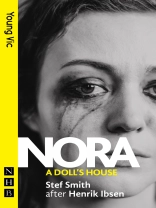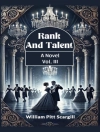‘You’ve lies in the whites of your eyes, Nora. What have you done…?’
Nora is the perfect wife and mother. She is dutiful, beautiful and everything is always in its right place. But when a secret from her past comes back to haunt her, her life rapidly unravels. Over the course of three days, Nora must fight to protect herself and her family or risk losing everything.
Henrik Ibsen’s brutal portrayal of womanhood caused outrage when it was first performed in 1879. This bold new version by Stef Smith reframes the drama in three different time periods. The fight for women’s suffrage, the Swinging Sixties and the modern day intertwine in this urgent, poetic play that asks how far have we really come in the past hundred years?
Nora : A Doll’s House was first produced by the Citizens Theatre, Glasgow, in 2019, at Tramway, Glasgow. It was revived at the Young Vic, London, in February 2020.
It is a finalist for the 2020 Susan Smith Blackburn Prize, awarded annually to celebrate women who have written works of outstanding quality for the English-speaking theatre.
‘Stef Smith’s excellent adaptation… a provocation infused with Ibsen’s radical spirit’ – Guardian
‘A beautiful and explosively significant piece of theatre’ – Scotsman
Giới thiệu về tác giả
Born in Norway in 1828, Ibsen began his writing career with romantic history plays influenced by Shakespeare and Schiller. In 1851 he was appointed writer-in-residence at the newly established Norwegian Theatre in Bergen with a contract to write a play a year for five years, following which he was made Artistic Director of the Norwegian Theatre in what is now Oslo. In the 1860s he moved abroad to concentrate wholly on writing. He began with two mighty verse dramas, Brand and Peer Gynt, and in the 1870s and 1880s wrote the sequence of realistic ‘problem’ plays for which he is best known, among them A Doll’s House, Ghosts, An Enemy of the People, Hedda Gabler and Rosmersholm. His last four plays, The Master Builder, Little Eyolf, John Gabriel Borkman and When We Dead Awaken, dating from his return to Norway in the 1890s, are increasingly overlaid with symbolism. Illness forced him to retire in 1900, and he died in 1906 after a series of crippling strokes.












